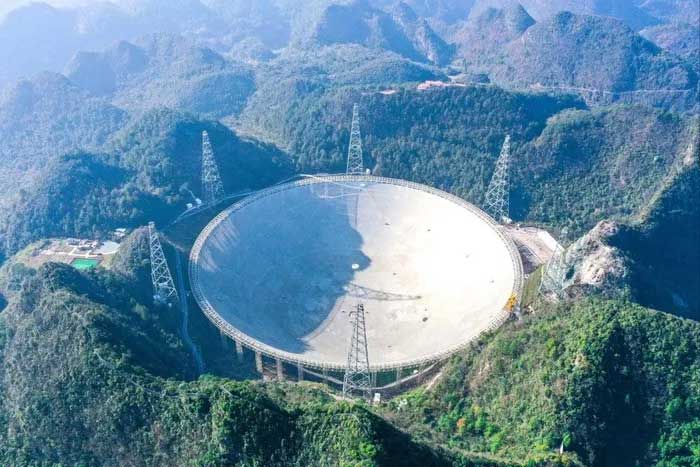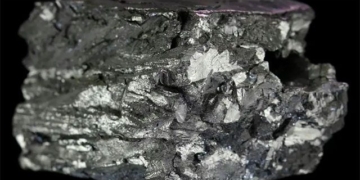The Five-hundred-meter Aperture Spherical Telescope (FAST) in China has unveiled mysteries surrounding the origins and nature of cosmic explosions after detecting features that current models cannot explain.
According to the South China Morning Post, cosmic explosions are extremely powerful radio bursts from deep in the universe (Fast Radio Bursts – FRBs), which last only a few milliseconds but emit energy equivalent to that produced by the Sun over the course of a year.

New observations made by the FAST telescope in Guizhou Province, China. (Photo: Xinhua)
In 2007, astronomers first detected a fast radio burst. Since then, hundreds of similar cosmic signals have been discovered. However, no scientist has been able to clarify their origins and physical nature.
Previous studies suggested that the first fast radio burst detected came from the Milky Way and originated from a magnetar—a type of neutron star with an extremely strong magnetic field. However, recent observations by scientists from China and the United States have challenged the prevailing views on the origins and physical nature of cosmic explosions.
Mr. Zhang Bing, an astrophysicist at the University of Nevada, Las Vegas, stated: “Clearly, cosmic explosions are more mysterious than we imagined. More multi-wavelength observational campaigns are needed to further explore the nature of this phenomenon.”
Researchers utilized the giant FAST telescope in Guizhou Province, southwestern China, to observe the phenomenon from April to June 2021. The research team, led by scientists from Peking University and the National Astronomical Observatories of China, discovered 1,863 bursts over 82 hours spanning 54 days from an active fast radio burst source named FRB 20201124A in an external galaxy.
According to findings published in Nature on September 21, researchers discovered unusual rotations that appeared briefly using the Faraday rotation measure, an important tool in measuring magnetic fields. Previously, scientists believed these rotations were invariant.
“This variability indicates that the surrounding environment is very complex. The density of particles and the magnetic field change rapidly,” commented Mr. Wang Fayin, a co-author of the study and a professor at the Nanjing University School of Astronomy and Space Science.

Earth as seen from space. (Photo: Shutterstock)
To observe the host galaxy of the FRB, the research team also used the Keck Observatory located at Mauna Kea in Hawaii. Mr. Zhang noted that people once thought young magnetars would only appear in active star-forming regions of a galaxy, but the FRB was found in a region devoid of such activity.
It was also assumed that FRBs existed in galaxies with high star density, but the research team found that the FRB did not reside there. This result provides new clues about the origins of fast radio bursts.
In a separate study published in Nature Communications, Professor Wang at Nanjing University suggested that the fast radio burst may originate from a binary system containing a magnetar and a massive Be star. Be stars are a group of non-homogeneous stars.
He stated that this new model provides important clues to explain the origins of fast radio bursts, as well as a solution to the origins of three recently discovered fast radio bursts.


















































